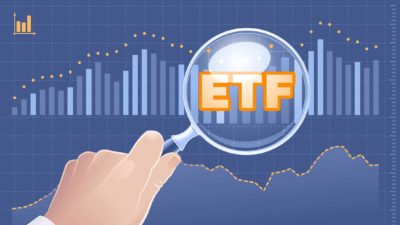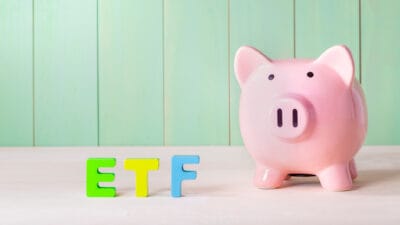ASX-listed exchange-traded funds (ETFs) can be an effective investment choice for retirement.
An ETF essentially gives us the ability to buy a basket of different shares in just one investment, creating good diversification. You don't need to worry about which individual stocks to pick for your portfolio.
If I were investing in ASX ETFs for retirement, there are two different investment strategies I'd consider to create good annual cash flow.
ASX ETFs that pay dividends
Plenty of retirees are attracted to individual ASX dividend shares for the dividend yield.
In contrast, many ASX ETFs invest in good businesses that don't necessarily pay large dividends (or any dividends at all). Blue chip international shares, for example, don't typically offer a strong dividend yield because they have a lower dividend payout ratio compared to ASX shares.
This is why the Vanguard Australian Shares Index ETF (ASX: VAS) – which invests in 300 of the biggest businesses on the ASX – could be a decent option for dividends. It has a sizeable allocation to names like BHP Group Ltd (ASX: BHP), Commonwealth Bank of Australia (ASX: CBA) and Fortescue Ltd (ASX: FMG), all of which produce good dividend yields.
According to Vanguard, the VAS ETF has a dividend yield of 3.8% (excluding franking credits).
Vanguard Australian Shares High Yield ETF (ASX: VHY) takes investing in high-yield stocks to another level. It only invests in high-yield ASX shares. It has 72 holdings, with companies like BHP, CBA, National Australia Bank Ltd (ASX: NAB) and Wesfarmers Ltd (ASX: WES) being the biggest allocations. And it has a dividend yield of 4.9% (excluding franking credits), according to Vanguard.
The one non-ASX-focused ETF I'll mention is Betashares FTSE 100 ETF (ASX: F100). It invests in 100 of the biggest businesses in the United Kindom's share market. In this portfolio, we've got names like Shell, HSBC, Unilever and GSK. The F100 ETF has a 12-month distribution yield of 3.1%.
What about growth ETFs?
Dividends aren't the only way to create cash flow.
If someone is in retirement (or thinking about it), I expect they have a sizeable portfolio balance.
Imagine if an investor had $100,000 invested in a growth-focused ASX ETF. If the value of that ETF went up 10%, it'd grow to $110,000 in value. If they sold $5,000, they'd generate a 5% 'yield' on that initial $100,000 and be left with $105,000.
In year two, if it rose by 10% again, it'd reach $115,500 – and if we aim for a 5% yield (of $105,000), it would deliver a cash flow of $5,250 and a remaining balance of $110,250.
Of course, no investment is guaranteed to go up over a year or any particular length of time. However, I think a few ASX ETFs have a better chance of delivering strong capital growth than many ASX share-focused ETFs.
If the capital value of the ETF falls one year, that is likely to be okay. It could rebound afterwards in the following year. We regularly see this happen after a bear market. That's why, in my opinion, it's good to stick to a sustainable withdrawal 'yield' of, say, 4% (or 5% for a strong-performing ASX ETF).
Keep in mind that past performance is not a guarantee of future performance.
Big hitters
Vaneck Morningstar Wide Moat ETF (ASX: MOAT) focuses on United States companies with strong, durable competitive advantages, and those businesses are currently valued at an attractive price (according to Morningstar). Since its inception in June 2015, the MOAT ETF has achieved an average return per annum of 15.5%.
VanEck MSCI International Quality ETF (ASX: QUAL) invests in global shares that have a high return on equity (ROE), low negative earnings variability and low levels of debt. Since the ETF's inception in October 2014, it has delivered an average return of 15.1% per annum.
These two are the sorts of growth ETFs I'd look at to create cash flow for my own retirement. They offer diversification, a strong investment framework and have a solid track record of long-term success.









